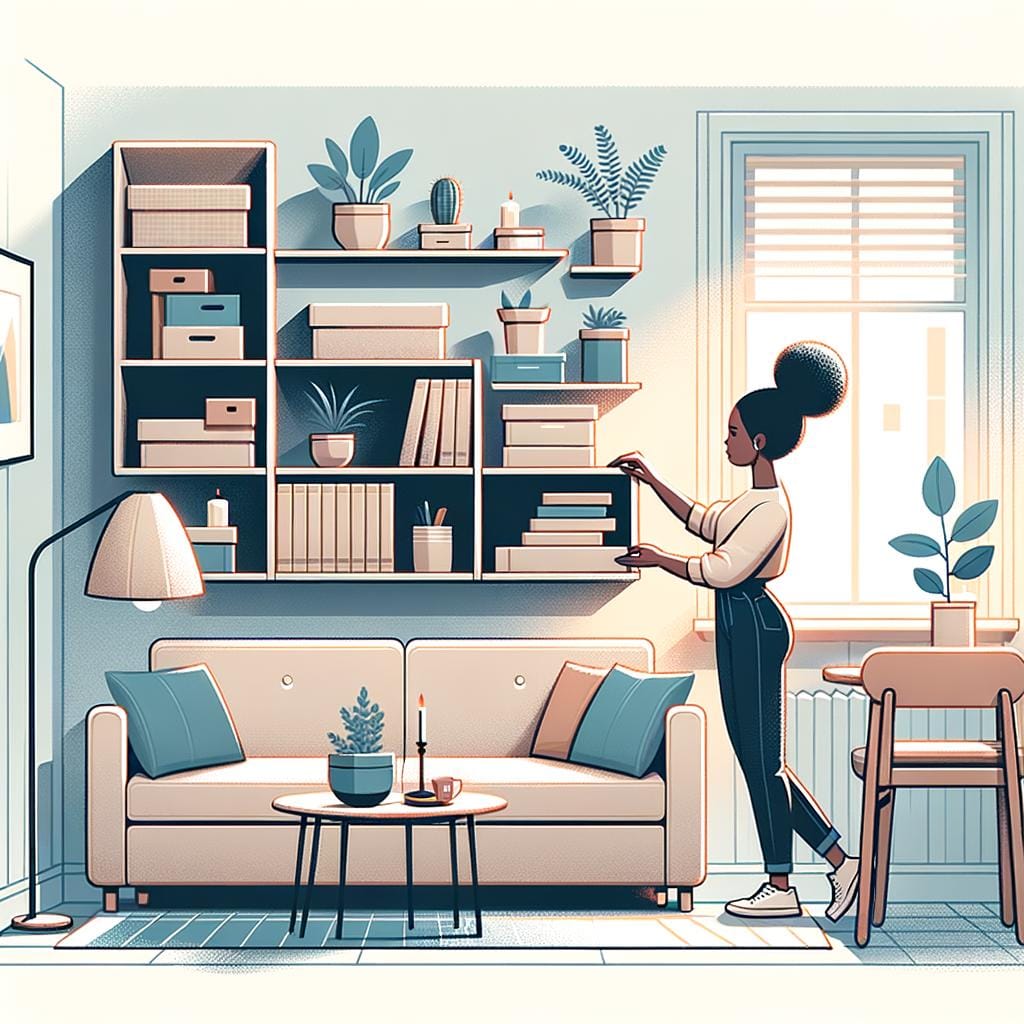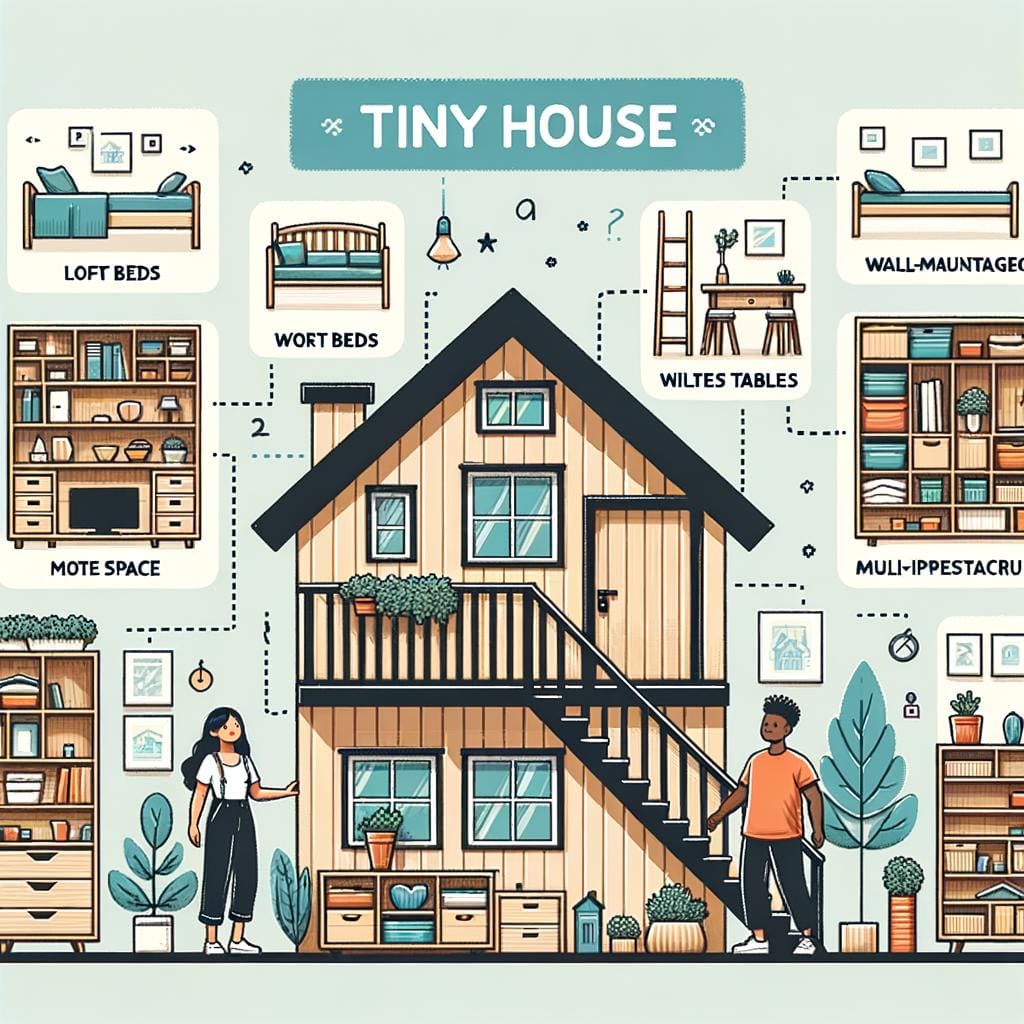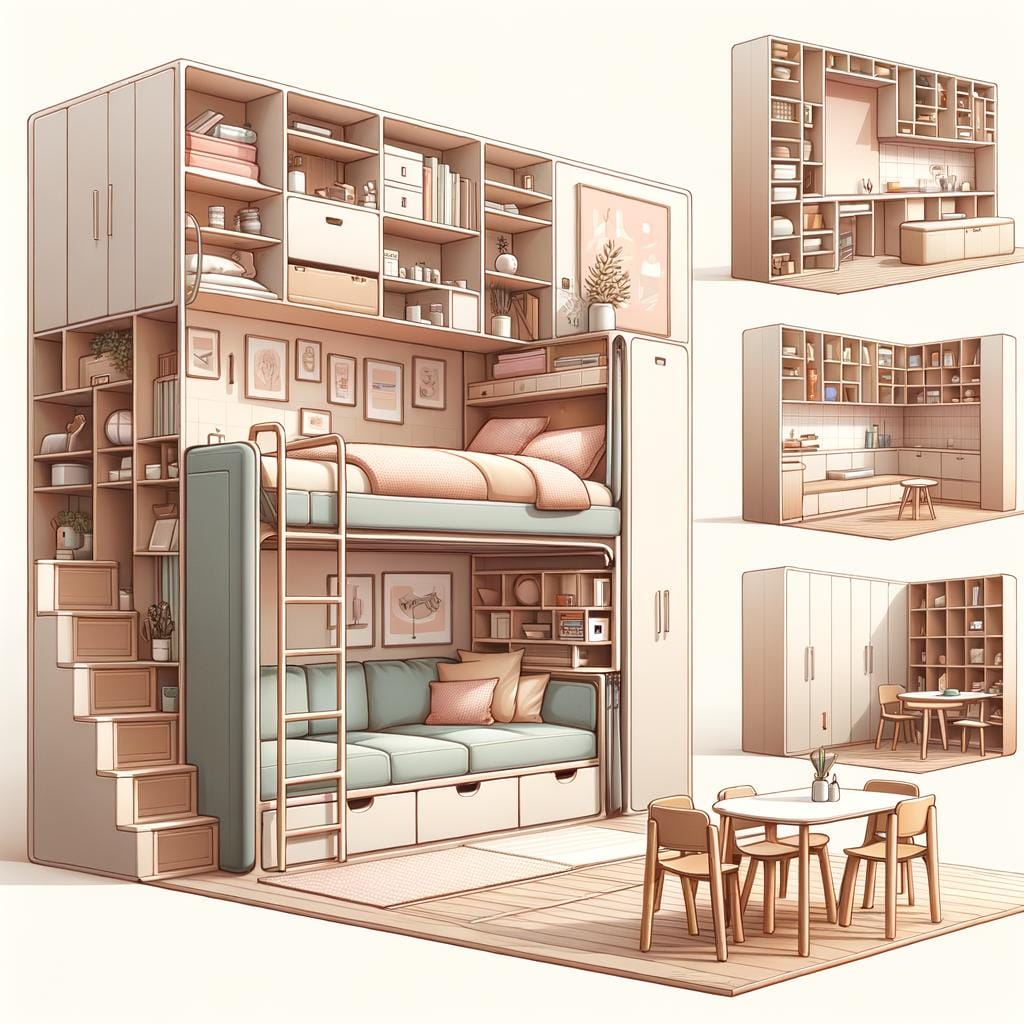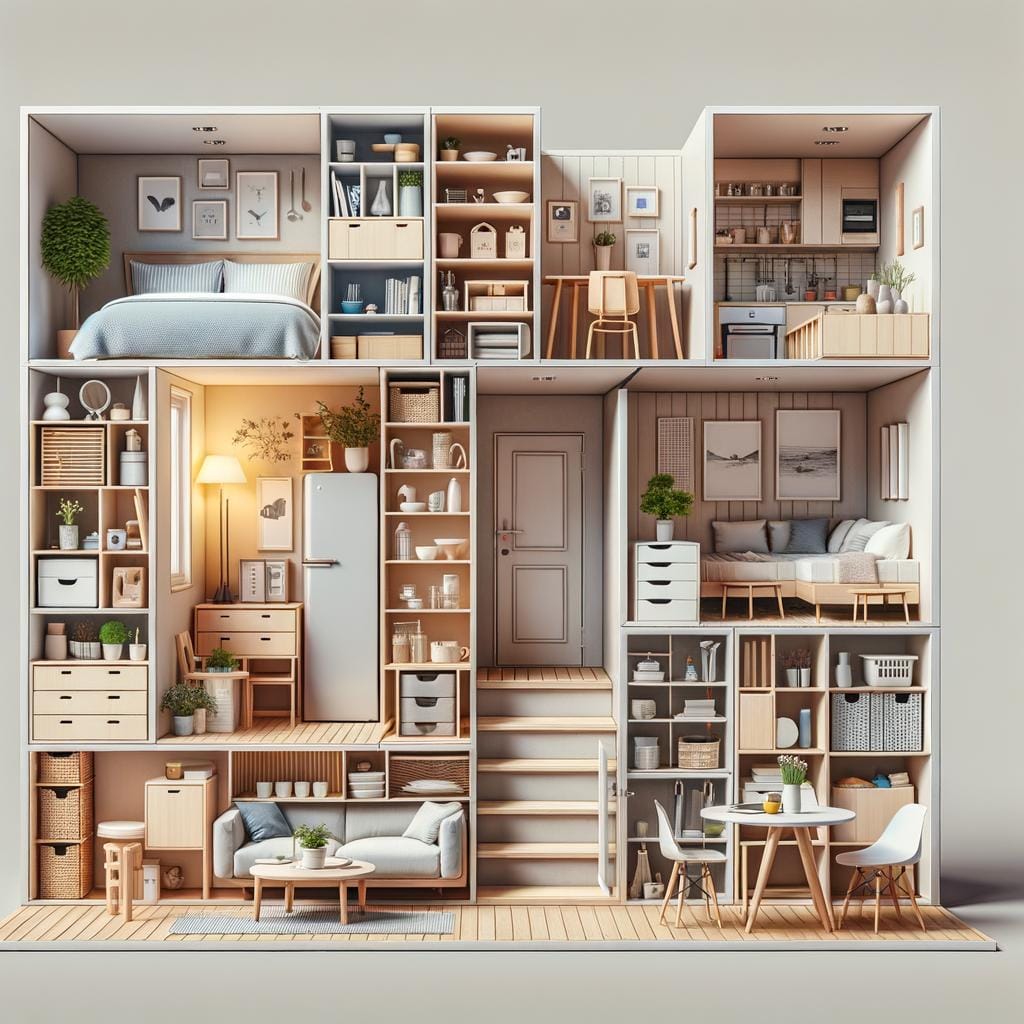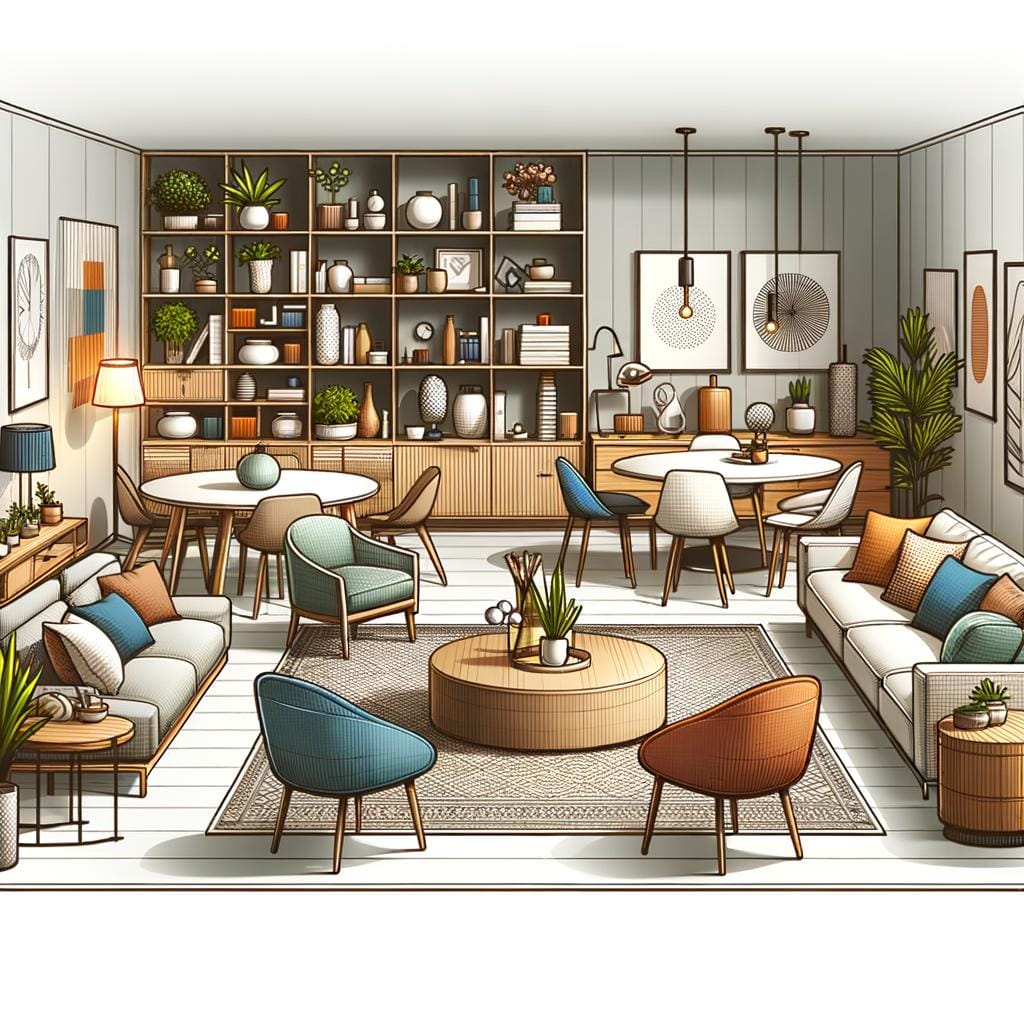Managing furniture in small areas is a challenging task that requires careful planning and strategic thinking. In compact living spaces, every square inch counts, making efficient furniture arrangement crucial for creating a functional and visually appealing environment. Whether you are living in a studio apartment, a tiny house, or just dealing with limited space in your home, optimizing the layout of your furniture can make a significant difference in how spacious and comfortable your area feels.
When it comes to managing furniture in small areas, the key is to assess your space thoroughly. By evaluating the layout and dimensions of your room, you can identify potential challenges and opportunities for maximizing space utilization.
From there, you can start exploring space-saving furniture solutions that offer multi-functional benefits without compromising on style or comfort. This approach not only helps in creating an organized and clutter-free environment but also enhances the overall functionality of your living space.
In this article, we will delve into various strategies and recommendations for managing furniture in small areas effectively. From smart storage solutions to creative DIY hacks, we will provide valuable insights on how to make the most out of limited space while maintaining a stylish aesthetic.
With our expert tips on furniture arrangement, vertical storage solutions, color coordination, and maintenance strategies, you will be equipped with the knowledge and inspiration needed to transform your small area into a cozy and inviting retreat.
Assessing Your Space
When managing furniture in small areas, one of the first steps is to assess your space thoroughly. Understanding the layout and dimensions of your room is crucial in determining the type and size of furniture that will best fit without overcrowding the area.
Start by measuring the dimensions of your room, including the length, width, and height. This will help you have a clear idea of how much space you have to work with and what size furniture pieces will be appropriate.
After assessing the dimensions of your room, consider the layout as well. Take note of any architectural features such as windows, doors, or built-in elements that may impact how you arrange your furniture. Additionally, think about traffic flow and how people move through the space.
It’s essential to leave enough room for easy movement while still maximizing the functionality of the area. By evaluating both the dimensions and layout of your room, you can make informed decisions when selecting and arranging furniture.
Another important aspect to consider when assessing your space is natural light sources and ventilation. Placing furniture strategically near windows can maximize natural light exposure while keeping airflow pathways open. This not only enhances the overall ambiance of your small area but also creates a more comfortable living environment. Additionally, considering these factors during assessment can help determine where specific furniture pieces should be placed to make the most out of available resources.
| Aspect to Assess | Considerations |
|---|---|
| Room Dimensions | Measure length, width, and height for appropriate sizing |
| Layout Features | Note windows, doors, traffic flow for optimal furniture placement |
| Natural Light & Ventilation | Maximize light exposure and airflow for a comfortable living space |
Space-Saving Furniture Solutions
Another excellent option is a storage ottoman, which not only provides extra seating but also offers hidden storage space for blankets, pillows, or other items. This type of furniture serves a dual purpose by reducing clutter in small areas while providing functionality. Additionally, wall-mounted desks or foldable dining tables can be great space-saving solutions for small apartments or bedrooms where traditional bulky furniture may not fit well.
When selecting multi-functional furniture pieces, it is important to consider both the practicality and aesthetic appeal of the items. Opting for slim and streamlined designs can help create an illusion of more space in compact rooms. Additionally, choosing furniture with built-in storage compartments or adjustable features can further enhance the efficiency of managing furniture in small areas.
| Space-Saving Furniture Solutions | Recommendations |
|---|---|
| Sleeper Sofa | Functions as both a couch and a bed |
| Storage Ottoman | Provides extra seating and hidden storage space |
| Wall-Mounted Desks/Foldable Dining Tables | Ideal for compact spaces where traditional furniture might not fit well |
Furniture Arrangement Tips
When it comes to managing furniture in small areas, one of the key aspects to consider is how to strategically arrange your pieces to maximize space and create a functional flow. By implementing smart furniture arrangement tips, you can make the most out of your limited space without sacrificing style or comfort.
Assessing Your Needs and Prioritizing Furniture
Before diving into arranging your furniture, it is essential to assess your needs and prioritize the pieces that are necessary for your daily activities. This will help you determine which items are essential and which ones can be considered as optional. Once you have identified the essential furniture pieces, you can then start planning their placement based on functionality and usability.
Embracing Multifunctional Furniture
Incorporating multifunctional furniture pieces can greatly benefit small spaces by providing dual purposes while optimizing space. For example, a sofa bed can serve as both seating during the day and a sleeping area at night, saving valuable square footage. Look for items such as storage ottomans that can double as seating or coffee tables with built-in storage compartments for added functionality. By embracing multifunctional furniture, you can streamline your space while maintaining versatility and efficiency.
Vertical Storage Solutions
Utilizing vertical storage solutions is a key strategy for managing furniture in small areas. When space is limited, it’s essential to think vertically and make use of wall space for organization and storage purposes. By maximizing the vertical space available, you can create a more efficient and functional layout in your small room.
Shelving Units and Wall-Mounted Shelves
One effective way to make use of vertical space is by incorporating shelving units or wall-mounted shelves. These pieces of furniture not only provide additional storage but also help to keep your floors clear, giving the illusion of a larger area. Consider installing shelving above desks, beds, or sofas to store books, decorative items, or other essentials. Opt for floating shelves for an even more streamlined look that won’t take up valuable floor space.
Over-the-Door Organizers and Hooks
Another smart solution for vertical storage is utilizing over-the-door organizers and hooks. These handy accessories can be easily installed on doors or walls to hold various items such as shoes, accessories, or even cleaning supplies.
Over-the-door organizers with pockets or compartments are perfect for storing small items like keys, sunglasses, or mail while keeping them within easy reach yet out of the way. Hooks can also be used to hang coats, bags, or towels without taking up precious floor space.
Color and Decor
When managing furniture in small areas, choosing the right colors and decor can have a significant impact on the overall look and feel of the space. By strategically selecting furniture pieces that complement your room’s color scheme and enhance its visual appeal, you can create a cohesive and harmonious environment. Here are some tips for making smart choices when it comes to color and decor in small spaces:
- Consider the size of your furniture in relation to the room: Opt for furniture pieces that are proportionate to the size of your space. Avoid bulky or oversized items that can overwhelm the room and make it feel cramped.
- Choose light and neutral colors: Lighter shades can help create an illusion of more space by reflecting natural light and making the room feel brighter and more open. Neutral colors also provide a versatile backdrop that allows you to easily switch up accents and decor.
- Add pops of color with accents: While sticking to a neutral palette for larger furniture pieces, incorporate pops of color with smaller accent pieces like throw pillows, rugs, or artwork. This can inject personality into your space without overwhelming it.
Matching Furniture Styles
In addition to choosing appropriate colors, consider matching furniture styles when outfitting small areas. Cohesive design elements can help create a sense of unity within the room, making it appear more organized and visually appealing. Here are some guidelines for selecting complementary furniture styles:
- Pick a unifying theme or style: Whether you prefer modern minimalist designs or cozy farmhouse aesthetics, choose a cohesive theme that guides your furniture selection process. Mixing too many different styles can make a small space look cluttered.
- Coordinate materials and finishes: To maintain consistency in your decor, opt for furniture pieces that share similar materials or finishes. This could mean pairing wood furniture with metal accents or sticking to all-white furnishings with chrome hardware.
- Scale your furniture appropriately: Pay attention to the scale of your furniture pieces in relation to each other. Mixing overly large items with dainty pieces can disrupt the visual flow of the room. Aim for a balanced composition that complements the size of your space.
By incorporating these tips into your decision-making process, you can select furniture that not only fits well within your small area but also enhances its overall aesthetic appeal. The right blend of colors, coordinated styles, and appropriate scale can transform even the tiniest spaces into stylish and functional environments.
DIY Furniture Hacks
One of the key challenges when managing furniture in small areas is finding pieces that not only fit but also serve multiple purposes. DIY furniture hacks offer creative solutions to this issue by customizing existing furniture to better suit your space and needs. These hacks allow you to personalize your furniture while maximizing functionality in a limited area.
One popular DIY furniture hack for small spaces is transforming a traditional coffee table into a storage ottoman. By adding foam padding, fabric upholstery, and a hinge-top, you can create a dual-purpose piece that provides both seating and hidden storage for blankets, pillows, or other items. This hack not only saves space but also adds style and functionality to your living area.
Another innovative idea for customizing furniture in small areas is repurposing old wooden crates as shelving units. By staining or painting the crates to match your decor, you can stack them vertically on a wall to create unique open shelving for books, plants, or decorative items. This budget-friendly hack adds storage space without taking up valuable floor space, making it an ideal solution for tiny rooms or apartments where every inch counts.
Maintenance and Organization
Living in a small space requires careful consideration when it comes to managing furniture in order to maximize functionality and avoid clutter. By incorporating smart storage solutions and organization strategies, you can create a harmonious balance between style and practicality in your limited area. Here are some tips for maintaining and organizing your small space efficiently:
- Utilize multi-functional furniture: Opt for pieces that serve dual purposes, such as a storage ottoman or a sleeper sofa, to save space and reduce clutter.
- Invest in vertical storage options: Make use of wall shelves, hanging organizers, or floating cabinets to free up floor space and keep essentials within reach.
- Create designated storage zones: Assign specific areas for different items like books, electronics, or clothes to maintain order and prevent chaos.
Keeping your small space clutter-free also involves regular maintenance and conscious organization. Implementing these practices will not only make your living environment more aesthetically pleasing but also enhance the functionality of your furniture arrangement:
- Declutter regularly: Get rid of items you no longer use or need to avoid unnecessary accumulation of stuff in your limited space.
- Implement a daily cleaning routine: Set aside time each day to tidy up, put things back in their designated places, and ensure everything is in order.
- Maximize hidden storage opportunities: Utilize under-bed storage bins, over-door hooks, or behind-the-door organizers to make use of every inch of available space.
By following these maintenance and organization strategies while managing furniture in small areas, you can create a cohesive and clutter-free living environment that maximizes both space efficiency and visual appeal. Efficiently utilizing your furniture arrangements will not only benefit the functionality of your room but also contribute to a more comfortable and enjoyable living experience.
Conclusion
In conclusion, effectively managing furniture in small areas is crucial for maximizing space and creating a functional and visually appealing environment. By assessing the layout and dimensions of your room, you can choose space-saving furniture solutions that serve multiple purposes. Investing in multi-functional furniture pieces will not only help optimize your space but also enhance the overall organization and flow of the area.
Utilizing vertical storage solutions, such as wall shelves or hanging organizers, can free up floor space and provide additional storage options. When selecting furniture for small areas, consider the color palette and decor style to create a cohesive look that complements the space. Additionally, implementing DIY furniture hacks can help customize pieces to better fit your specific needs and constraints.
To maintain a clutter-free and organized small space, regularly decluttering and organizing belongings is essential. Incorporating storage bins, baskets, and other organizational tools can help keep items out of sight while still easily accessible. By following these tips and strategies, you can effectively manage furniture in small areas to create a functional and stylish living or working environment.
Frequently Asked Questions
How Do You Fit Furniture in Tight Spaces?
When fitting furniture in tight spaces, it’s essential to prioritize function and versatility. Look for multi-functional pieces like a sofa bed or nesting tables. Consider using vertical space with tall bookshelves or wall-mounted shelves. Opt for furniture with a smaller footprint and avoid bulky pieces that overpower the room.
How Do You Arrange Furniture in Long Narrow Spaces?
Arranging furniture in long narrow spaces requires strategic planning to create balance and flow. Consider dividing the space into zones for different functions, such as a seating area and a dining area. Place larger furniture pieces like sofas along the longest wall and avoid blocking pathways. Use rugs and lighting to define each area while maintaining continuity throughout the space.
How to Arrange Furniture in a Small Living Room With a TV?
When arranging furniture in a small living room with a TV, focus on creating a cozy yet functional layout. Position the TV against a wall that is visible from the seating area but doesn’t dominate the room visually.
Choose compact seating options like armless chairs or loveseats to maximize space. Consider mounting shelves or using storage ottomans to keep clutter at bay without sacrificing style or comfort in your small living room design.

Hello, I’m April Denton, your go-to expert for all things home decluttering and organization. With over a decade of experience helping individuals transform their living spaces into serene, clutter-free sanctuaries, I am passionate about the life-changing benefits of decluttering. My journey into the world of organization began out of necessity, juggling a busy career and a bustling household. I quickly realized that a well-organized home was the key to a more balanced, stress-free life.

